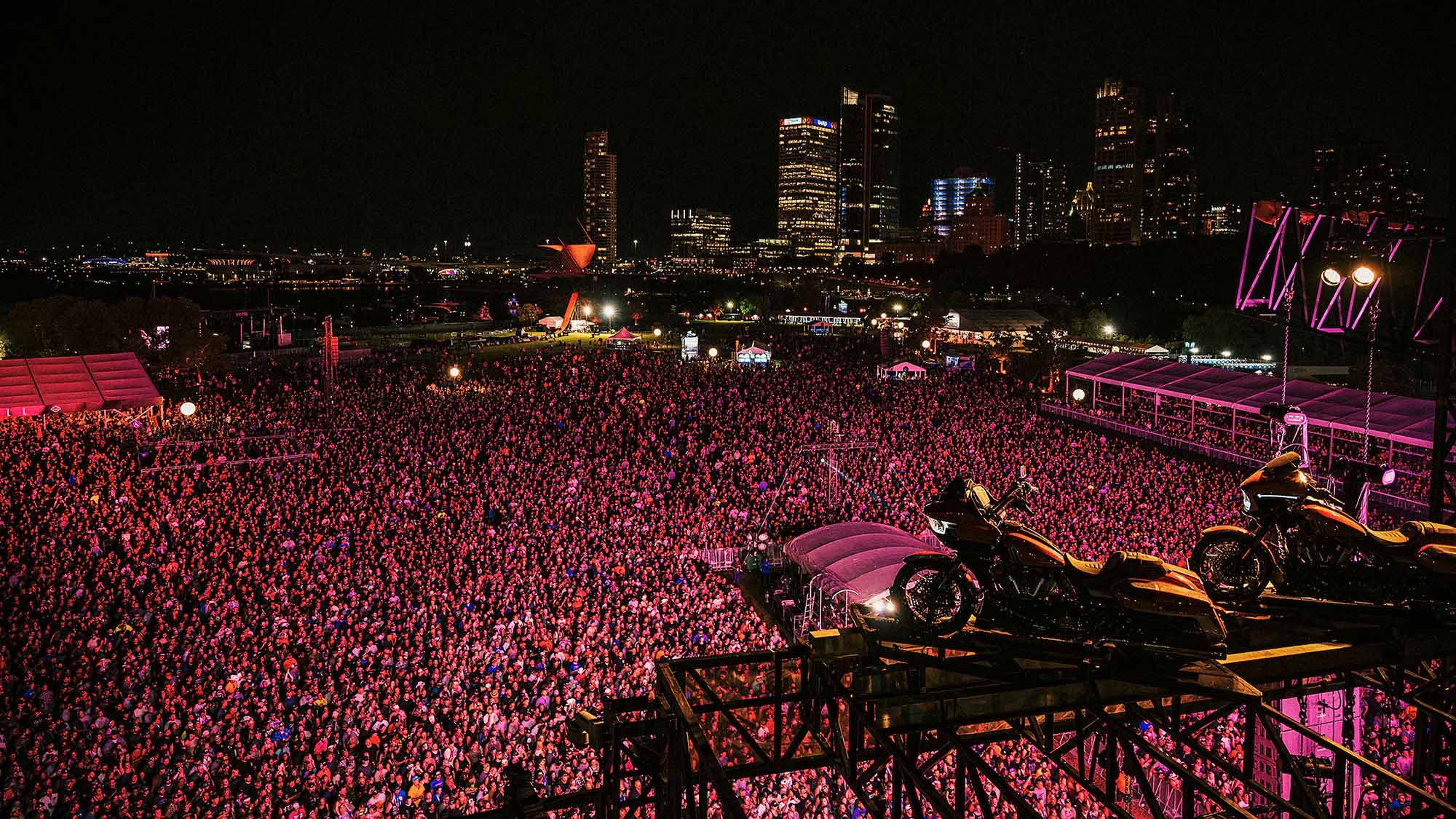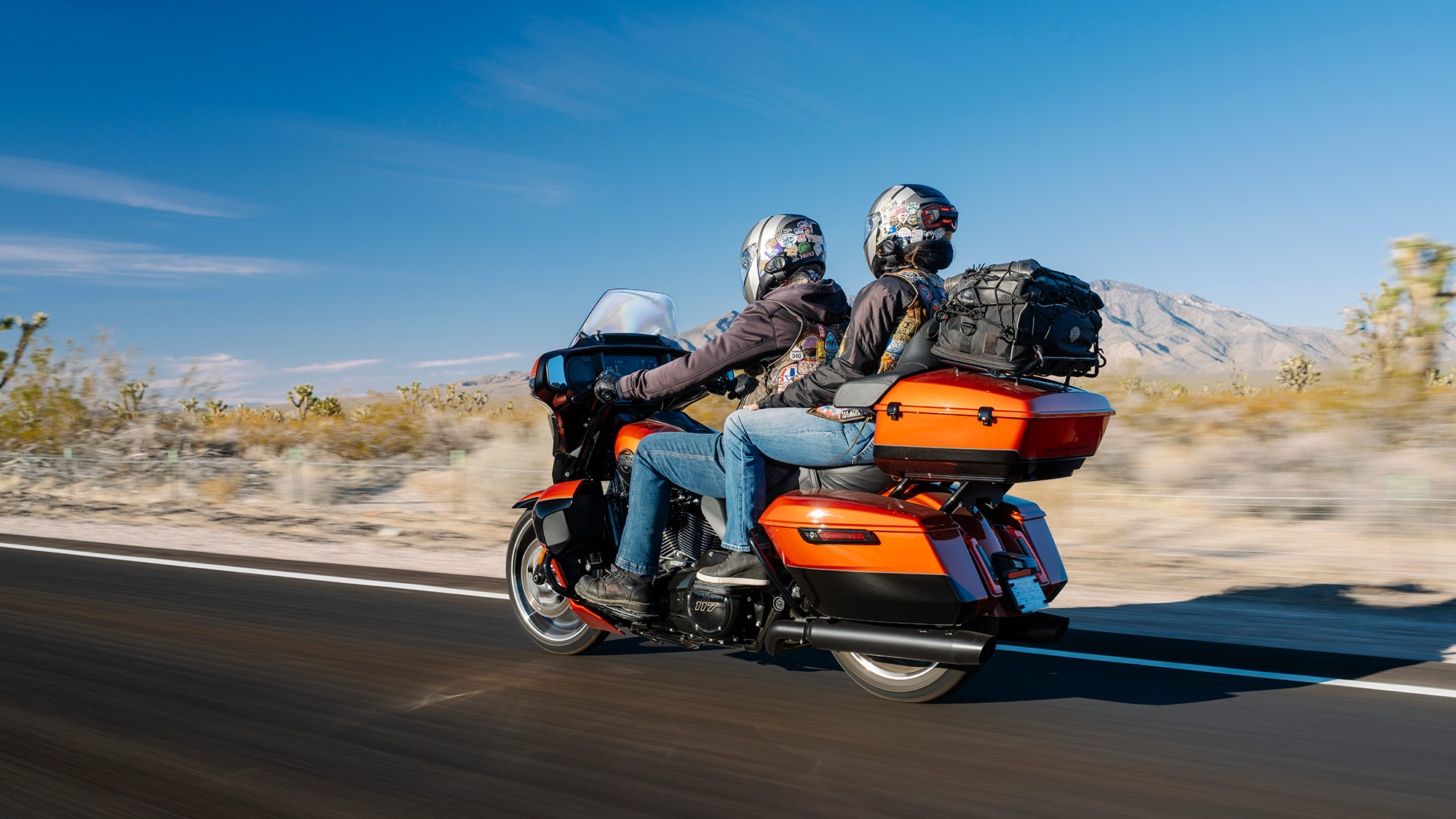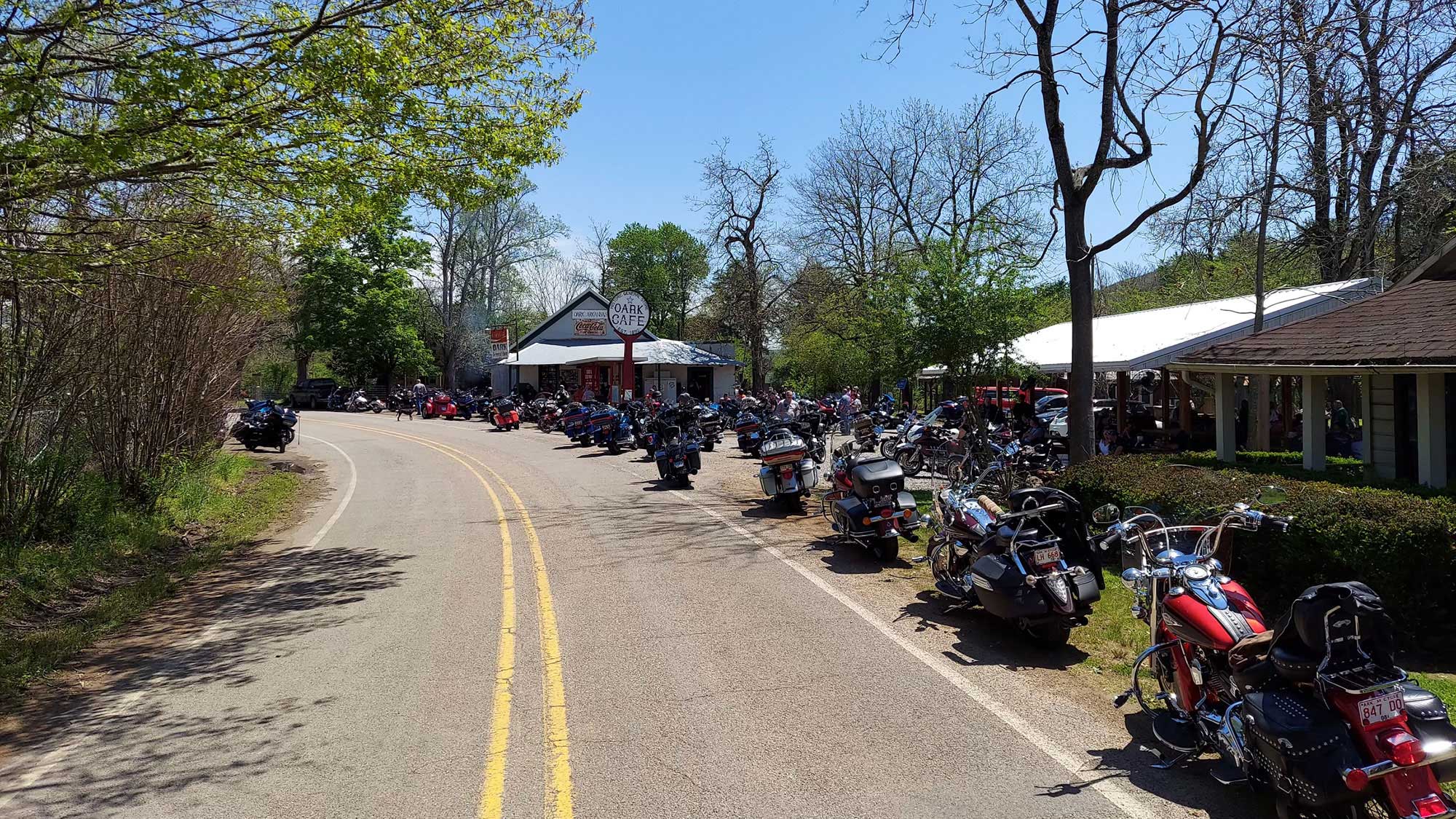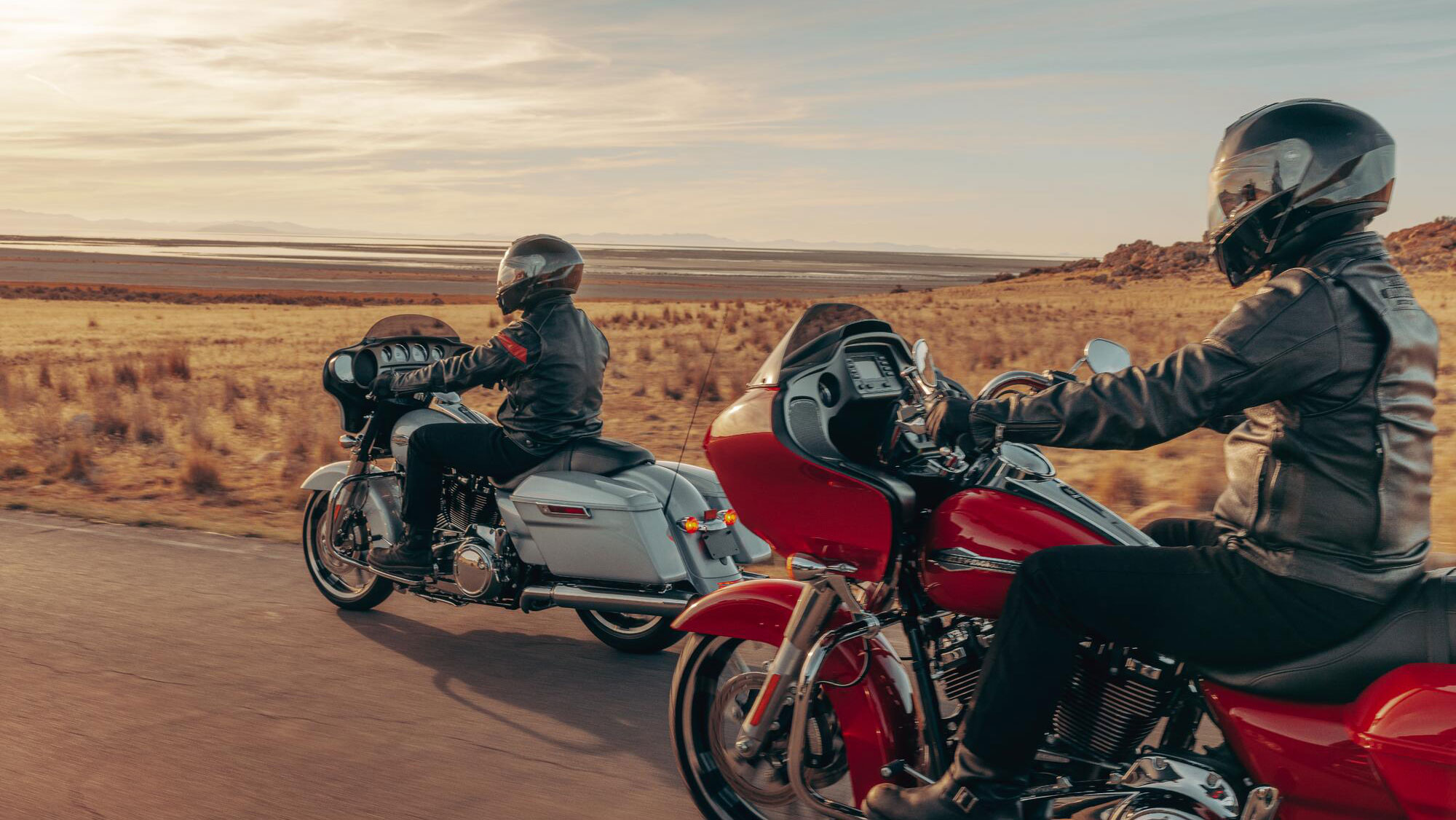
The road is calling
Get the most from your touring bike this riding season.
Harley-Davidson touring motorcycles are supremely well equipped for what they’re designed to do—effortlessly eat up the miles on long-distance rides. To achieve this, they’re inevitably bigger and heavier than a comparable cruiser or sport bike, and, as standard, have softer suspension for a smoother ride and greater load-carrying ability. This affects how a touring motorcycle handles, particularly when fully loaded and carrying a passenger. Acceleration and braking occur at a different pace; you’ll need to exert more energy into directing and steering, and weight transfer will potentially affect braking and acceleration too.

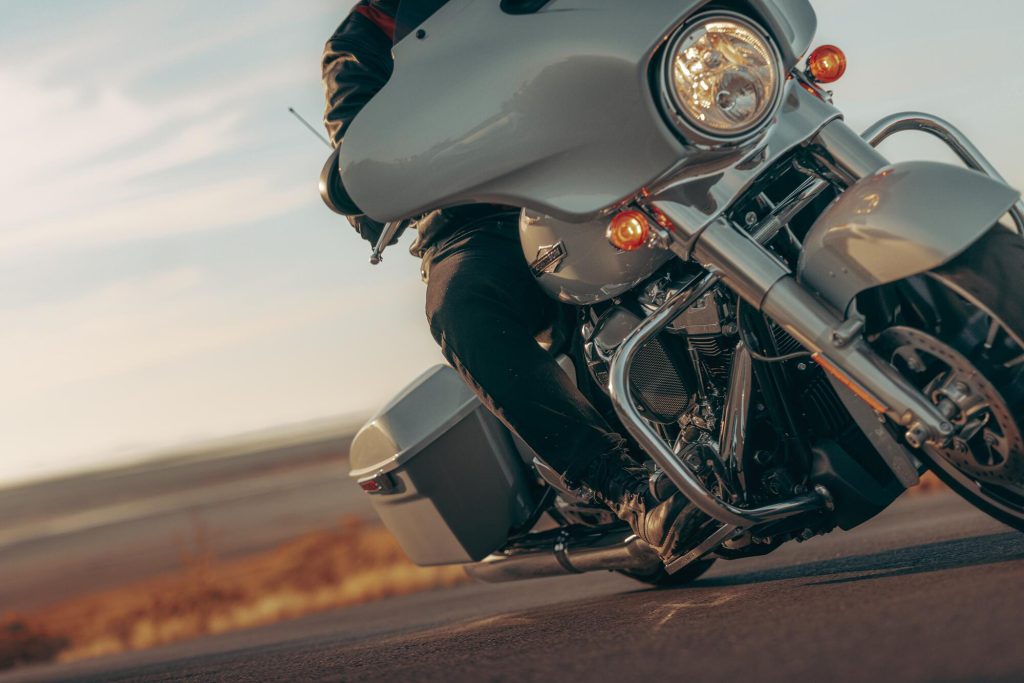
Yet we’ve all seen videos of big tourers tackling obstacle courses at speed, achieving seemingly impossible lean angles with little effort. This is all down to rider technique and practice. If you practice, practice, practice, you’ll be able to do the same. Here are some basics that will help you…
First, start by riding as smoothly as possible. You need to be aware of the issue of weight transfer. With a relatively heavy bike like a tourer, riding smoothly will minimize weight transfer, making you safer at all traffic speeds. Avoid heavy braking and acceleration wherever possible, and try to anticipate road conditions and obstacles rather than just react at the last minute. If you grab a handful of front brake, the bike’s weight will transition forward quickly, causing the front end to dive, limiting traction. The best way to reduce this is to apply the front and rear brake at the same time, causing the bike to sit down and lessen the weight transfer to the front end, increasing maximum traction and stability and decreasing stopping distances.
Second, get used to using the rear brake firmly and progressively, feeling it begin to drag the rear end of the bike down. Never use the rear brake abruptly as this could cause the rear tire to break traction. Keep practicing and you’ll learn the necessary techniques specific to your bike to achieve the right balance between front and rear braking.
Using the rear brake can also be a vital tool when riding at slow and inconsistent speeds, such as in slow-moving traffic, so practice “dragging” the rear brake at slow speeds while still under power, slipping the clutch as necessary—this keeps you in control but limits the forward speed. The same principle applies when moving on uneven surfaces such as gravel—stay off the front brake to avoid the front end “tucking under”, resulting in an embarrassing low-speed spill.
Rider posture is another powerful element in touring bike control as it affects your balance on the bike, how effectively you turn, how you anticipate road issues ahead, and how effectively you countersteer. Sit with your shoulders back, head up and eyes looking as far ahead as possible; where you look, the bike will follow. Don’t tuck your elbows in—riding with them sticking out gives you more control as you ride, and helps with countersteering—this is why flat-track racers ride with elbows high at all times. Similarly, practice using weight transfer through your feet to assist with countersteering through turns by pressing down on the left foot for left turns and the right foot to turn right.
The added weight of a touring bike can make parking more problematic than a smaller bike, but there are techniques to make this easier and safer. Start by finding a parking spot on flat, even ground where you can put both feet down when you stop. If you park a heavy motorcycle on a slope, it’s likely to lean or slide, while a slight uphill slope will mean your bike doesn’t lean over as much, making it easier to lift off the kickstand. Back your bike into the parking spot rather than going in front first—this allows easier slow-speed maneuvering and means your bike will be ready to go when you are. Beware of soft ground—there’s a risk your kickstand can sink into it, causing your bike to go down. If it’s unavoidable, use a kickstand coaster or improvise with a piece of wood.
The way you pack your bike can have a big influence on handling, too. Tourers tend to have a high center of gravity, so pack heavier items, such as tools, as low down as possible, ideally in the bottom of the side panniers. Try to have similar weight in both panniers—if one is much heavier it will affect the way your bike handles and turns.
If you have panniers or saddlebags, get liners from your Harley-Davidson dealership. Not only does this make packing easier, it means you can simply lift out what you need for an overnight stop.
Finally, do a test pack before you’re due to leave to make sure you can get everything you need on the bike and that it’s safely secured. Following this advice should help to ensure your touring ride is as trouble-free as possible, allowing you to enjoy your Harley-Davidson touring bike for what it was designed for—effortless long-distance riding.
Do you have helpful tips for riding a touring bike? Share them here.
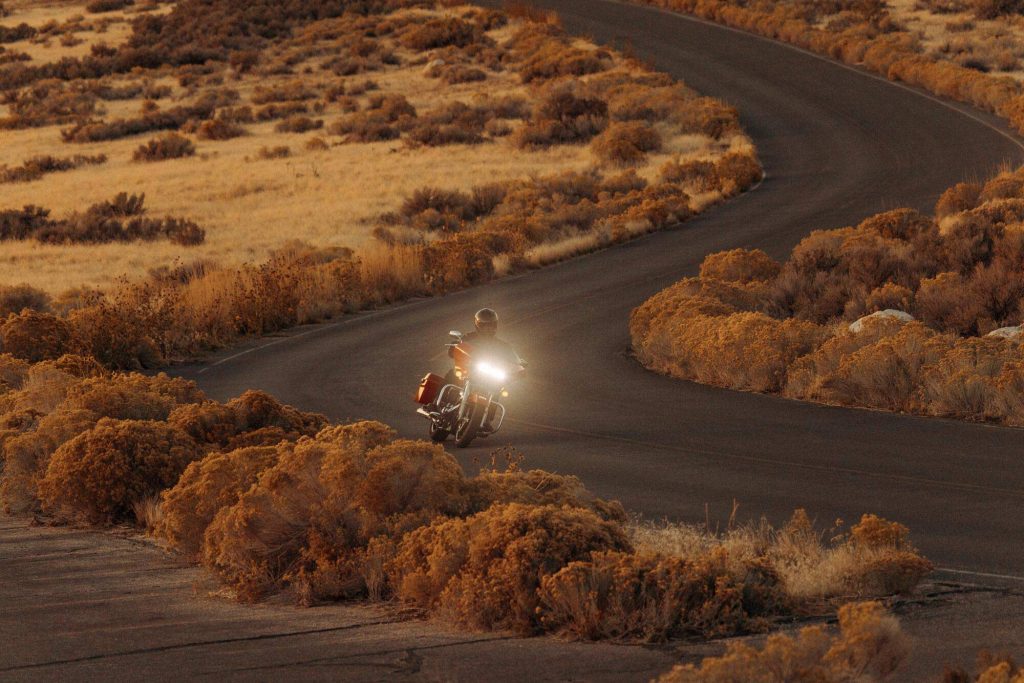
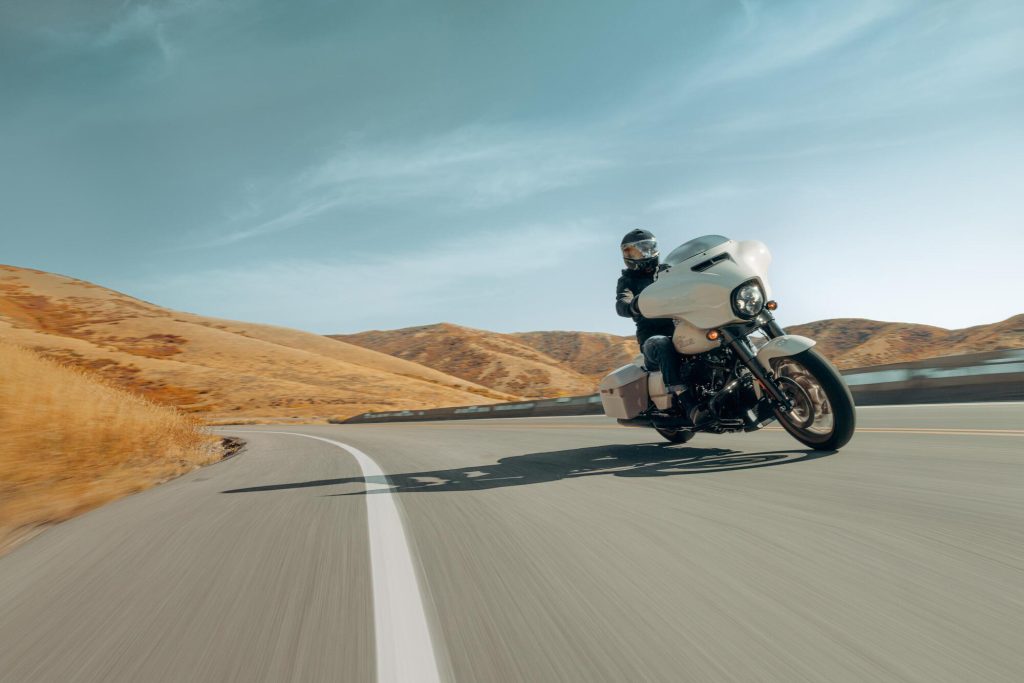
Tags:
Read more tales from the Harley Owners Group!
Events calendar
From multi-day rallies to regional and touring rallies there’s something for everyone in the coming year
New riding routes for 2025: part four
As part of RIDE 365, we select a handful of U.S. destinations each year that are famed for their riding experiences and reward members for completing them. We have 15 great rides for 2025—here are the next three…
